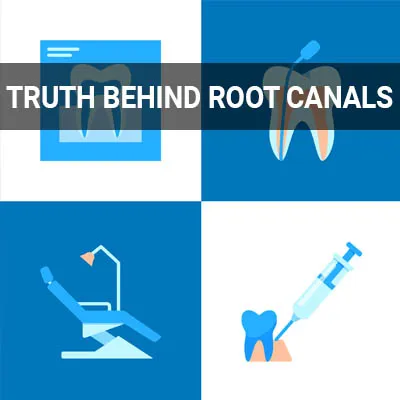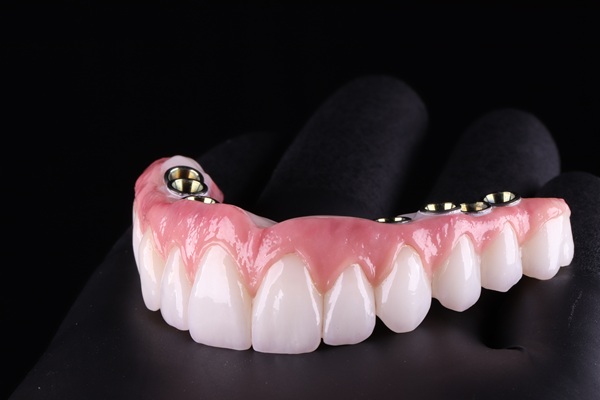Types of Dental Root Fractures Dumont, NJ
Each layer of the tooth plays an important role in keeping your mouth healthy and happy. Whether it be from injury or general wear and tear, a dental root fracture can cause discomfort and pain. The sooner your tooth receives treatment, the better the outcome will be.
If you suspect that you have a fractured tooth, do not hesitate to protect your oral health. Our team at Dumont Family Dental in Dumont and the surrounding area can help. Contact us at (201) 374-7202 to learn more about our services or schedule an appointment.
Layers of the Teeth
Teeth consist of several layers and include four types of tissues. Enamel, dentin, and cementum make up the hard tissues. The pulp, which contains the nerves, blood vessels, and connective tissues, is soft tissue.
The part of the tooth that is visible in the mouth is called the crown. The crown consists of a hard outer shell called enamel. The tooth root spreads down from the crown into the gum line and jawbone, holding your tooth in place.
The second layer is called the dentin, which contains the pulp chamber at the tooth center. Extending down from the pulp chamber and into the jawbone is the root canal, a passageway for nerves and blood vessels. When root fractures extend this far, it is important to see a dentist for treatment.
“Teeth consist of several layers and include four types of tissues.”
Root Fracture Types
Root fractures occur when the crack involves the dentin, cementum, and pulp. They typically separate into two types—oblique and vertical. A vertical root fracture involves the entire length of the tooth or just a section of it. An oblique root fracture occurs when the crack runs along the tooth length. Vertical and oblique root fractures require different treatment approaches with varying levels of success.
A fracture that goes deep into the layers of the tooth can affect the health of the entire tooth and even the ones surrounding it. A root fracture exposes the inner layers of the tooth to bacteria, leading to an infection. An untreated infection can lead to extreme discomfort while chewing and sensitivity to hot and cold foods.
“Root fractures are when the crack involves the dentin, cementum, and pulp.”
Oblique Fractures
Subgingival Fractures
Oblique subgingival fractures extend below the gum line. The severity of the fracture depends on how far it has gone past the gum line. These fractures are usually painful as the fractured tooth usually remains in the gums after it breaks off. However, patients may have a subgingival fracture for years before feeling any pain.
Supragingival Fractures
This type of oblique fracture only affects the tooth's crown and does not extend below the gum line. Usually, a supragingival fracture results in the affected part of the tooth breaking off. Patients typically experience little pain as the nerves and blood vessels of the pulp remain intact and undamaged. Although this fracture may not cause immediate pain, it can lead to infection or pain in the future without treatment.
Root Fractures
Oblique root fractures do not usually affect the surface of the tooth at all. The damage occurs below the gum line, particularly under the bone. While this classification of fracture is not visible, it is very painful. Patients with oblique root fractures may require root canal treatment or extraction, depending on how close the fracture is to the tooth fracture.
“Oblique subgingival fractures extend below the gum line.”
Check out what others are saying about our dental services on Yelp: Types of Dental Root Fractures in Dumont, NJ
Vertical Fractures
A vertical root fracture is when the tooth has a crack running from top to bottom. These fractures start at the root of the tooth and run toward the crown. Since this type of fracture does not typically exhibit any signs or symptoms, it can go unnoticed.
The different types of vertical root fractures include:
Furcation
A vertical furcation fracture involves a crack that extends to the tooth where it splits into two or more separate roots. The nerve is often involved in this type of crack. This is a painful type of fracture and will make the tooth virtually impossible to use.
Apical
A fracture that occurs directly down the middle of the tooth and root is called an apical fracture. This is a painful fracture that will require the patient to come in for a dental appointment. Sometimes a root canal can be used to save the tooth.
Vertical Root Fracture
A vertical root fracture is when part of the tooth root breaks off. This is often due to brittle roots from nerve death in the tooth. A previous root canal procedure can also cause this kind of fracture.
Vertical fractures often occur in weak teeth or teeth with previous dental treatment like a root canal or crown. However, healthy teeth can get vertical fractures from chewing on hard items such as ice. Along with a root canal, vertical fractures can sometimes be treated with a unique type of cement to bond the teeth and prevent the fracture from getting worse.
“A vertical root fracture is when your tooth has a crack running from top to bottom.”
Questions Answered on This Page
Q. What are the types of oblique fractures?
Q. What are the layers of the teeth?
Q. What are the types of dental root fractures?
Q. What are the types of vertical fractures?
People Also Ask
Q. How common are root canals?
Q. What if a crown or root canal cannot save my cracked tooth?
Q. Do I need a tooth extraction?
Q. Is tooth extraction normal?
Frequently Asked Questions
Q. How does a root fracture happen?
A. Root fractures can result from a traumatic injury or can happen in teeth with previous procedures like a root canal or crown. Healthy teeth can also be subject to cracks by chewing on hard materials and foods like popcorn kernels. Your treatment will depend on the complexity of the situation and the long-term prognosis of the tooth.
Q. What are the different types of root fractures?
A. There are vertical and oblique or horizontal fractures. Oblique fractures run side to side along the tooth and only make up about 3% of dental injuries. Vertical fractures start at the root and progress up toward the crown.
Q. What are some of the symptoms of root fracture?
A. Not all root fractures present symptoms, leaving them undetected if you do not see the dentist regularly. When there are symptoms, they can include discomfort or pain when biting or chewing food, sensitivity to hot and cold, and gum swelling. These symptoms may also come and go.
Q. How are root fractures treated?
A. The severity of the crack will determine the treatment plan. Sometimes, you can stabilize the tooth, but you will need a root canal if the fracture reaches the pulp. In some cases, the root fracture may be so severe that you will need a tooth extraction.
Q. What happens after treatment for a tooth fracture?
A. Following the treatment, the patient will need to be careful with what they eat. This way, the tooth can continue to heal properly. We will also go over the necessary care techniques the patient can take at home to further the recovery process.
Endodontic Terminology
Call Us Today
Fractures are common and painful problems that require treatment as quickly as possible. Dumont Family Dental can help find the right treatment option for you. Call us at 201-374-7202 to schedule an appointment or learn more about our services.
Helpful Related Links
- American Dental Association (ADA). Glossary of Dental Clinical Terms. 2024
- American Academy of Cosmetic Dentistry® (AACD). Home Page. 2024
- WebMD. WebMD’s Oral Care Guide. 2024
About our business, and website security
- Dumont Family Dental was established in 1973.
- We accept the following payment methods: American Express, Cash, Check, Discover, MasterCard, and Visa
- We serve patients from the following counties: Bergen County
- We serve patients from the following cities: Dumont, New Milford, Bergenfield, Tenafly, Cresskill, Demarest, Haworth, Hackensack, Englewood, Teaneck, River Edge, and Paramus
- National Provider Identifier Database (1689734162). View NPI Registry Information
- Norton Safe Web. View Details
- Trend Micro Site Safety Center. View Details
Back to top of Types of Dental Root Fractures











